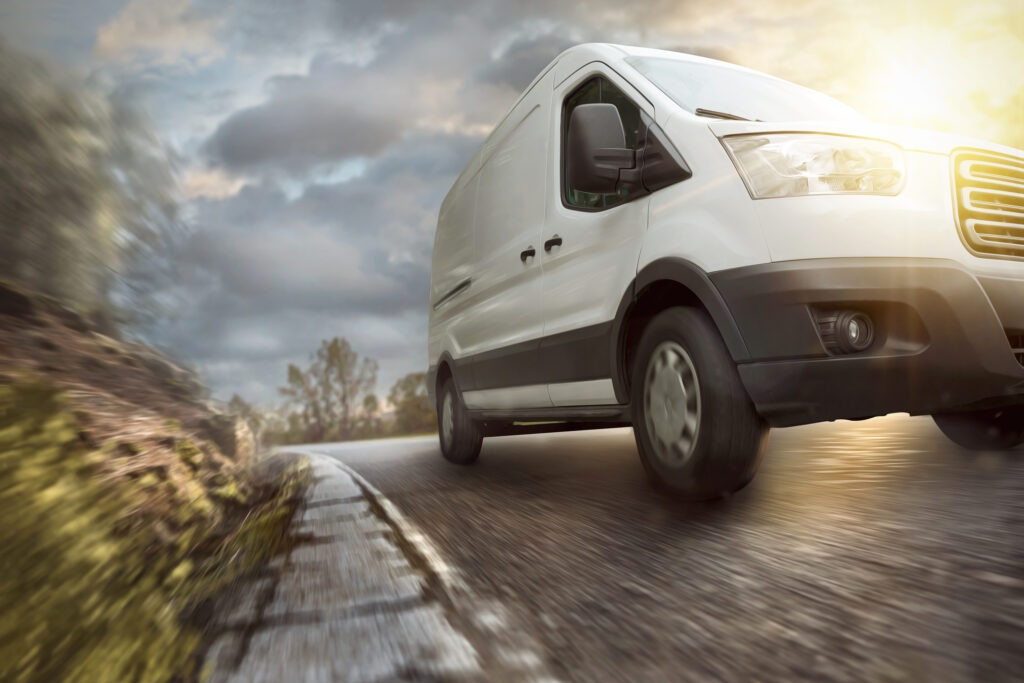How are used-LCV markets adapting across Europe?
15 March 2024

Used light-commercial vehicle (LCV) markets have seen a great deal of change in recent years. Autovista Group (now part of JD. Power) experts from Germany, Poland, and the UK examine how their regions have adapted, alongside Autovista24 editor Tom Geggus.
The COVID-19 pandemic, supply struggles, and attempts to tackle emissions are among the biggest factors to have influenced European LCV markets in recent years. Powered by Autovista Group data, a used-LCV price index reveals how these major market trends have affected values.
No regulations or restrictions
Germany’s logistics sector has yet to see any visible efforts from the government to regulate its vehicles. For example, internal-combustion engine (ICE) models are not restricted from running in urban areas dependent on their emissions output, unlike in London or Paris.
‘Polls currently suggest that more conservative parties will win next year’s election, which reduces the possibility of such measures being introduced,’ explained Kai Seidemann, LCV market analyst at Schwacke (now part of J.D. Power).
Nevertheless, new ICE LCV sales are still set to end from 2035, while gradual CO2-reduction targets chip away at emission levels.
Changing consumer behaviour
The used-LCV price index in Germany follows a similar trend to many European countries. Residual values (RVs) are tied to the volumes of individual offers and existing demand.
The sharp rise in the used-LCV price index is largely due to changing purchasing behaviour. Restrictions during the COVID-19 pandemic pushed consumers to order more goods online, resulting in increased demand for delivery vehicles.
However, since the beginning of 2023, RVs of used LCVs have fallen again. This is because government subsidies have been limited to the new-car market, while used battery-electric vehicles (BEVs) lacked purchase incentives.
‘A large number of used all-electric models are putting pressure on the market, causing prices to fall as COVID-19’s effects undergo normalisation,’ Seidemann said.
Diesel driven market
Diesel-powered LCVs continue to dominate the German market. Business owners see their fleets as tools, which means the vehicles have to run. For diesel powertrains, there is no time lost in the loading processes and no complicated planning of routes to account for charging infrastructure.
At the other end of the scale, petrol-powered LCVs remain uninteresting for business owners due to high fuel prices and even higher rates of fuel consumption. Nevertheless, the small amount of new petrol LCVs registered can be resold, meaning prices are correspondingly positive.
The price index for BEVs has been falling continuously since the beginning of 2023. This has a lot to do with sales subsidies in Germany. While new BEVs have benefitted from a range of incentives, there is little to attract used-vehicle purchasers.
Looking at the different powertrain performances across Europe’s used-LCV markets, diesel and petrol-powered models are on a broadly comparable level. Meanwhile, RVs of battery-electric vans vary greatly from country to country.
‘When compared with other European countries, Germany’s high energy costs and charging infrastructure layout is not suitable for electric LCVs,’ Seidemann commented.
Due to high demand during the COVID-19 pandemic, many electric vans were registered in Germany. These vehicles have now entered the used market. However, supply has been outweighed by demand, which has put pressure on RVs, sending them downwards.
Profound changes in Poland
The LCV market in Poland has seen profound changes in the last six months. First and foremost, a period of increasing sales volumes and prices came to an end as used vehicles entered a stage of increased discounting.
‘As new models became increasingly available, normal competition returned and dealers entered a fierce competition for customers, with many deploying discounts to win,’ explained Marcin Kardas, head of valuations at Eurotax Poland (now part of J.D. Power).
These falling prices put pressure on the value of the youngest used vehicles. In turn, the delayed replacement of fleets resulted in greater stocks of five to six-year-old models. This was all compounded by a decline in demand, which had several causes.
Poland saw GDP growth of only 0.3% in 2023, with economic problems translating into declining consumption and demand for last-mile transport. Additionally, the market was saturated with new delivery vehicles during the COVID-19 pandemic, which became redundant due to a fall in consumer spending power.
Market crisis point
As a result, the commercial vehicle market entered a period of deep crisis, which was felt across all segments. Demand fell for both universal panel vans and more specialised chassis. In the last 15 months, Poland recorded one of the greatest rates of value depreciation for used commercial vehicles in Europe.
This decline in value is a natural process, especially after the huge overvaluation of used vehicles during the COVID-19 pandemic. The problem is the pace of devaluation, which has the potential to destabilise the market and force frequent RV revisions.
‘Market risks will certainly increase in the near future, with further RV reductions expected,’ Kardas predicted. ‘Registrations of LCVs are falling and the possibility of repeating 2023’s result appears next to impossible.’
Figures from PZPM reveal 4,638 new light-commercial vehicles were delivered in January, down 10.3% year on year. This year’s 2.3% GDP growth forecast by the Polish Economic Institute would help slow this trend, but no such effect has been felt yet.
Electric doubts
Considering the adoption rate of electric LCVs, Poland clearly still has many doubts about the usefulness of this powertrain. The main users of electric delivery vans are primarily large companies or state institutions.
Here, vehicle purchases are driven by regulations or internal ESG policies. Data from EV-volumes.com reveals that battery-electric LCVs took a 4.2% market share in the country last year. This lack of confidence translates into rapidly declining values for used vans fitted with the powertrain.
Currently, three-year-old LCVs are between 6% and 18% cheaper than a year ago. It is worth remembering that the current used market consists of a small selection of first-generation vehicles with a limited range. This includes models like the Renault Kangoo Z.E. and Nissan eNV200.
‘This situation could change once the latest generation of vehicles enters the market. These models boast more advanced technology and more competitive performances,’ Kardas said.
Perfect storm in the UK
‘Demand for used LCVs in the UK has remained strong over the last four years,’ explained Andy Picton, chief commercial vehicle editor at Glass’s (now part of J.D. Power). ‘This is chiefly because of the COVID-19 pandemic and the semiconductor shortage.’
Businesses were forced to adapt, which meant running their vehicles for longer. Meanwhile, as most shops closed during the pandemic, consumers in the UK relied on home delivery for all their needs. This meant more LCVs were required.
At the same time, COVID-19 restrictions prevented businesses from operating with two people in a vehicle at once. This resulted in more units being acquired. Then, as the production of new vehicles slowed and even stopped, operators had to turn to the used market for additional units. This created a perfect storm of supply and demand, with values increasing exponentially.
Lack of stock
The last four years have therefore seen a general lack of stock, particularly of higher-specification models. With so many different business requirements, all sizes of LCVs have seen an exceptional level of demand.
However, there is limited brand loyalty when it comes to vehicle replacement. An operator may initially look for a like-for-like replacement, but ultimately any LCV that is reliable, economical and sensibly priced will likely sell.
‘Obviously, the ability to carry the required load is vital, while other elements such as a full-service history will help a van sell more quickly,’ Picton said.
Charged off the road
Alongside the introduction of the zero-emission vehicle (ZEV) mandate this year, more clean-air zones (CAZ) and ultra-low emission zones (ULEZ) are coming into force in towns and cities. The aim is to rid the UK’s roads of more polluting Euro 4 and Euro 5 vehicles.
This means any van more than eight years old cannot enter these urban areas without paying a daily charge. Buyers are therefore moving away from older models, which is putting these values under increased pressure.
This trend can be expected to continue over the coming years as OEMs produce cleaner vehicles. When they appear on the used market, Euro 6 and Euro 7 LCVs will see demand from operators who are unable to make battery-electric LCVs work for them.
‘Volumes of this stock will fall progressively towards 2035 while fewer ICE vehicles are produced. Overall, demand for the cleanest ICE stock will remain strong in the foreseeable future,’ Picton added.
Long road ahead
The UK’s all-electric van market is currently driven by the ZEV mandate. This requires ZEVs to make up 10% of LCV registrations in 2024. However, battery-electric LCVs only made up 5.9% of registrations across 2023.
This means a lot of work is needed to convince drivers, and primarily fleets, to transfer to electric LCVs. If this can be achieved, a used electric van market will be created three to four years down the line.
There is currently little demand for used BEV LCVs in the country, with many prohibitive factors. This includes vehicle cost, limited charging infrastructure, charging cost, charging time, perceived lack of range, and limited payload.
Struggling to gain acceptance
The current generation of all-electric LCVs is struggling to gain acceptance. As converted ICE models, with an electric powertrain instead of a petrol or diesel engine, these vehicles are weighed down with heavy batteries, meaning they come with a compromise.
But the next generation of LCVs are being developed as BEVs from the ground up with all the attributes and convenience of an ICE vehicle. This includes ICE-comparable charging times as well as useable payload and towing capabilities that will not affect the range of roughly 300 miles(483km).
However, these developments will mean little if there is a lack of suitable charging infrastructure. This includes support for fleets, where there is the potential for depot charging, as well as smaller businesses where on-street charging is required.
‘The UK will continue to see a heavy reliance on new and used diesel-powered LCVs over the next couple of years,’ Picton forecast. ‘This will be the case until new BEV prices fall and charging infrastructure improves.’
More advanced technology, capable of delivering larger ranges and greater payloads, will result in improved demand for new battery-electric LCVs. This in turn will create a strong used market capable of appealing to smaller businesses,’ he concluded.



